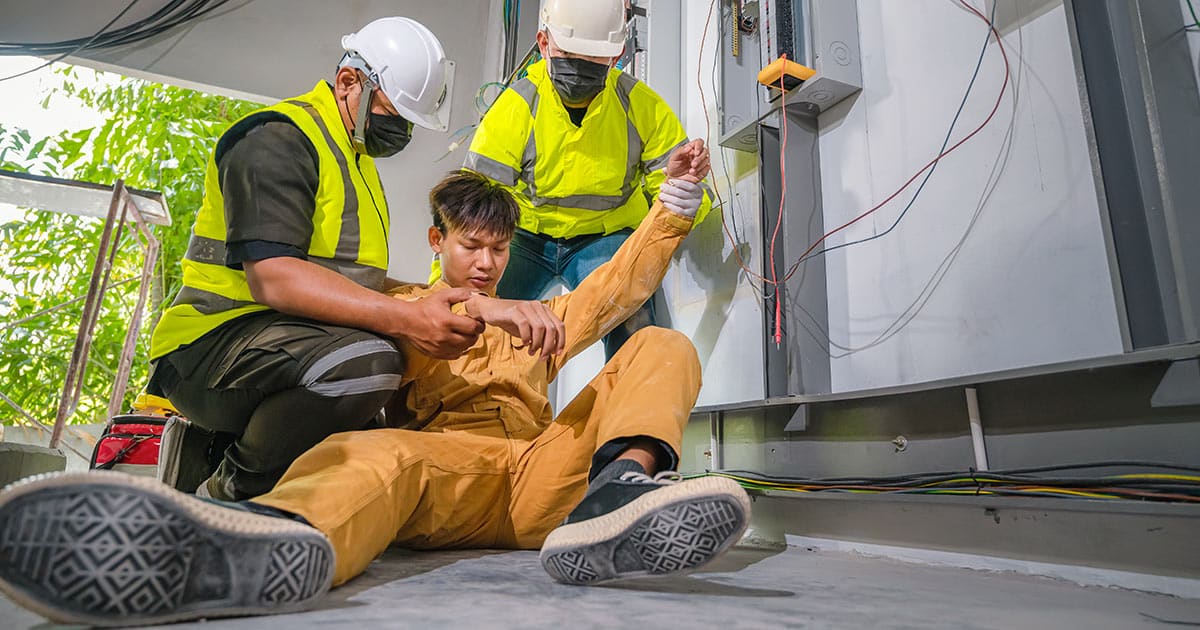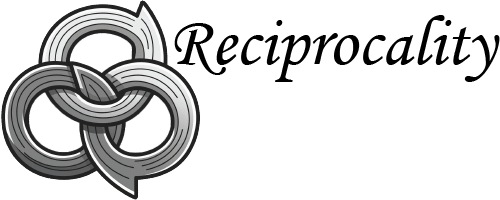The concept of the level of consciousness is used in several fields, including medicine, psychology, and neuroscience, to describe and understand the different states of consciousness individuals experience.
Measurement in human beings is a complex and multi-disciplinary field. Methods commonly used include clinical assessment, neurological tests, brain imaging techniques, neuropsychological tests, and consciousness scales (such as Glasgow Coma Scale, Rancho Los Amigos Scale, and Full Outline of UnResponsiveness score).
Measuring consciousness is not an exact science and the different methods may provide different results. One’s consciousness is a complex and dynamic phenomenon. Proper assessment therefore relies on a multi-pronged approach.
Definition
Level of consciousness refers to the state of awareness and perception that a person has at a given moment. It refers to the degree to which an individual is awake, alert, and able to respond to their environment. A person’s state can vary from full alertness to deep sleep or unconsciousness.
In medical and neurological contexts, consciousness is often assessed using standardized scales such as the Glasgow Coma Scale (GCS) or AVPU, which provide a way to quantify and describe a person’s consciousness level. The assessment is an important part of evaluating their overall condition and guiding treatment decisions.
Level of consciousness can also refer to higher states of awareness beyond just being awake and alert. For example, some spiritual and philosophical traditions describe higher states of consciousness, such as enlightenment, spiritual awakening, and mystical experiences. These higher states of consciousness are characterized by increased self-awareness, heightened perception, and a sense of connection to a greater reality.
In these contexts, the consciousness is not simply a measure of wakefulness and alertness, but is seen as a spectrum of awareness that ranges from the most mundane, everyday experiences to the most profound spiritual states. The concept of higher levels of consciousness is often seen as a central aspect of personal growth and spiritual development.
3 Types of Consciousness
There are various ways to categorize and describe different levels of consciousness. But a common way to classify them is based on the Glasgow Coma Scale (GCS) that produces three classifications.
The GCS is a widely used tool that assesses consciousness in individuals who have suffered a traumatic brain injury or other brain injury or illness. This method assesses three different aspects of consciousness: eye opening, verbal response, and motor response. Based on the scores, the level of consciousness can be classified into three categories:
- Coma. This is the lowest level, characterized by the individual being unresponsive to stimuli and unable to communicate.
- Vegetative state. The individual is unconscious and cannot communicate, but has some spontaneous movements and functions such as breathing, sleeping and waking.
- Minimally conscious state. The individual has limited ability to communicate and respond to stimuli, but may still show some signs of awareness and cognitive function.
Note that levels of consciousness are not absolute and can vary depending on the individual and the circumstances.
4 Levels of Consciousness
The four levels of consciousness can refer to different models or theories of consciousness. But a common classification system is based on the states of waking, dreaming, deep sleep, and transcendental consciousness. These states are typically described as follows.
- Waking. Aware of one’s surroundings, thoughts, emotions, and sensations. This is the normal state of consciousness for most people during the day.
- Dreaming. Asleep but experiencing vivid and imaginative images, thoughts, and emotions.
- Deep sleep. In a deep sleep and unaware of their surroundings or unable to respond to stimuli.
- Transcendental. A higher state characterized by a deep sense of peace, unity, and connection with the universe. This can be experienced through meditation, spiritual practices, or spiritual experiences.
Some models of consciousness describe more levels or stages, while others view the states as a continuous spectrum.
5 Levels of Consciousness
The concept of levels of consciousness can vary based on the theory or model being referred to. However, a common classification system is based on the states of waking, dreaming, deep sleep, transcendental consciousness, and a fifth level referred to as self-realization.
Self-realization is when an individual has a deep understanding and realization of their true nature and purpose. This level is often associated with spiritual enlightenment and is considered the one.
Alert, Voice, Pain, Unresponsive (AVPU)

AVPU is commonly used by medical and nursing staff, including in emergency departments, intensive care units, and the pre-hospital setting. It’s a quick and simple tool to assess a person’s level of consciousness (LOC), particularly in emergency medicine when time is critical.
AVPU stands for Alert, Voice, Pain, and Unresponsive. The four-point scale used to quickly assess consciousness levels. The AVPU scale is used to determine the severity of a person’s condition and guide their treatment.
Scoring a patient with AVPU involves a four-point scale:
A – Alert. The patient is awake, alert, and responsive to stimuli such as spoken commands or touch.
V – Voice. The patient is aroused by voice but not necessarily responsive to stimuli. They may respond to simple commands such as “squeeze my hand.”
P – Pain. The patient is only responsive to painful stimuli, such as a pinch or a sternal rub. They are unresponsive to voice or touch.
U – Unresponsive. The patient is not responsive to any stimuli, including voice or painful stimuli.
Medical and nursing staff will assess a patient by asking them to respond to stimuli and assigning a score based on their response. The score is usually recorded as A, V, P, or U. AVPU is used to quickly assess a person’s level of consciousness, guide treatment decisions, and monitor their progress over time.
Altered Level of Consciousness

Altered consciousness is a change in an individual’s normal level of awareness and responsiveness. Changes range from simple ones, such as feeling drowsy or sluggish, to more severe changes, such as confusion, disorientation, or loss of consciousness.
Such an occurrence can be caused by factors such as physical or physiological changes, medical conditions, injury, medication, substance use, or mental health issues. Individuals experiencing an altered consciousness should receive medical evaluation and treatment, as it can be a sign of a serious underlying condition.
The abnormal state of consciousness is more difficult to define and characterize, as evidenced by the many terms applied to altered states of consciousness by various observers. Among such terms are: clouding of consciousness, confusional state, delirium, lethargy, obtundation, stupor, dementia, hypersomnia, vegetative state, akinetic mutism, locked-in syndrome, coma, and brain death.
Clinical Methods: The History, Physical, and Laboratory Examinations. 3rd edition.
Obtunded refers to a state of decreased awareness and reduced responsiveness to stimuli. It is a type of altered level of consciousness, in which a a person is less responsive to stimuli, has a reduced ability to concentrate and follow commands, and a decreased memory of events. Obtundation can be caused by a variety of factors, including head injury, infections, toxins, and certain medical conditions.
The ICD-10 code for altered level of consciousness is R40.9, which represents an “unspecified altered level of consciousness.” It is used when the exact cause of the abnormal consciousness cannot be determined or specified.
In a clinical setting, healthcare providers evaluate an individual’s altered LOC and determine the cause of the alteration. This can include observations of behavior and speech, reflex testing, and laboratory tests. Treatment will depend on the underlying cause.
Measurement in Nursing
In the field of nursing, the level of consciousness is often evaluated using a tool called the Glasgow Coma Scale. GCS is used to assess a patient and can help determine the extent of brain injury or impairment. The tool evaluates a patient’s ability to follow commands, open their eyes, and respond to stimuli.
The GCS consists of three categories, each of which is scored between 3 and 15.
- Eye opening. Ability to open their eyes, with scores ranging from spontaneous opening (4 points) to no opening (1 point).
- Verbal response. Ability to speak and respond to verbal stimuli, with scores ranging from oriented and appropriate speech (5 points) to no verbal response (1 point).
- Motor response. Ability to move in response to stimuli, with scores ranging from purposeful movement (6 points) to no motor response (1 point).
The total score of the GCS ranges from 3 to 15, with higher scores indicating a more alert and conscious state, and lower scores indicating a more impaired level. The GCS is widely used in nursing, as well as in emergency medicine and other medical disciplines, to assess the consciousness level of patients.
The GCS is a quick and simple tool that can be easily performed at the bedside. Nurses use the GCS score to monitor changes in the patient’s mental state and to provide important information to other members of the healthcare team. This information can help guide treatment decisions, such as determining the need for airway support, respiratory support, or other interventions.
Medical and Neurology
In medicine and neurology, consciousness is usually evaluated using a combination of clinical examination and neuroimaging techniques. The level of consciousness is used to determine the severity of brain injury, monitor recovery and progression, and evaluate the effectiveness of treatments.
Methods used to assess consciousness in the medical field include GCS, the Rancho Los Amigos Scale, the Grady Coma Scale, and the Full Outline of Unresponsiveness (FOUR) score. We’ve already discussed the GCS in relation to nursing.
The Rancho Los Amigos Scale is another tool for consciousness measurement. It provides a more comprehensive evaluation of the patient, taking into account responses to stimuli, as well as their ability to interact with their environment.
The Grady Coma Scale assesses the response to stimuli in five grades: Grade I – Confusion, Grade II – Stupor, Grade III – Deep Stupor, Grade IV – Decerebrate Rigidity, and Grade V – Coma. The Grady Scale is mostly used in the field of neurology.
The Full Outline of Unresponsiveness (FOUR) score is a newer assessment tool. Four key aspects of the patient’s consciousness are evaluated: eye opening, motor response, verbal response, and brainstem reflexes.
Neuroimaging techniques, such as magnetic resonance imaging (MRI) and computed tomography (CT) scans, can also be used to evaluate consciousness. They help assess the structural integrity of the brain and the presence of any injuries or disorders that may affect consciousness.
In addition to these tools, other clinical examination methods such as the pupillary light reflex, corneal reflex, and gag reflex can also be used.
Levels of consciousness are a crucial aspect of patient care and are closely monitored in medicine and neurology. A change can indicate a change in the patient’s clinical status and may require prompt medical attention.
Decreased consciousness refers to a state in which a person appears to be awake and aware of their surroundings but is not responding normally. The person may not answer when spoken to, may have a blank facial expression, and may not exhibit a normal level of alertness and attention.
Artificial Intelligence

In artificial intelligence (AI), the concept of “level of consciousness” is not widely used. Consciousness is typically seen as a unique and complex property of biological systems, and is not considered to be a property that can be replicated in machines or artificial systems.
Instead, AI researchers focus on building systems that can perform specific tasks, such as recognizing objects in images, generating natural language text, or playing games. These systems can be designed to have various levels of intelligence and ability to learn and adapt, but they do not have consciousness in the sense that biological beings do.
However, there are some researchers and philosophers who are exploring the idea of machine consciousness, and attempting to build systems that could potentially exhibit some aspects of it. These ideas are highly speculative and remain far from being realized in practice. The study of machine consciousness is still in its early stages and is largely a topic of philosophical and theoretical investigation.
